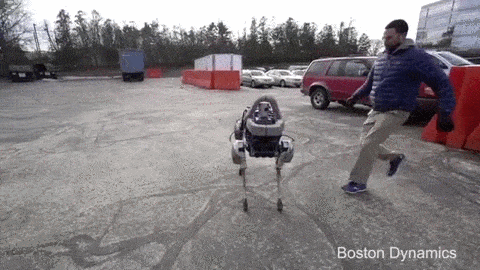The robot isn’t quite the pack animal that BigDog is, since its larger predecessor weighs 240 lbs and can carry 340 lbs, but it looks like it might be able to travel with more agility, if not more speed, and it’s more able to operate in environs where there isn’t much room to navigate. You could easily see Spot bravely rushing into blown out buildings, for instance, or navigating crowded city streets while recovering from attempts by passers-by to upend it.

Spot manages to look surprisingly organic at times in the video above, which is testament to the fact that even under its new master Boston Dynamics continues to advance the pace of robotics developments, likely to the extreme satisfaction of Department of Defense stakeholders. It’s not quite Metal Gear yet, but it’s getting there, and to quote Solid Snake, “a strong man doesn’t need to read the future, he makes his own.”
Comments
Post a Comment